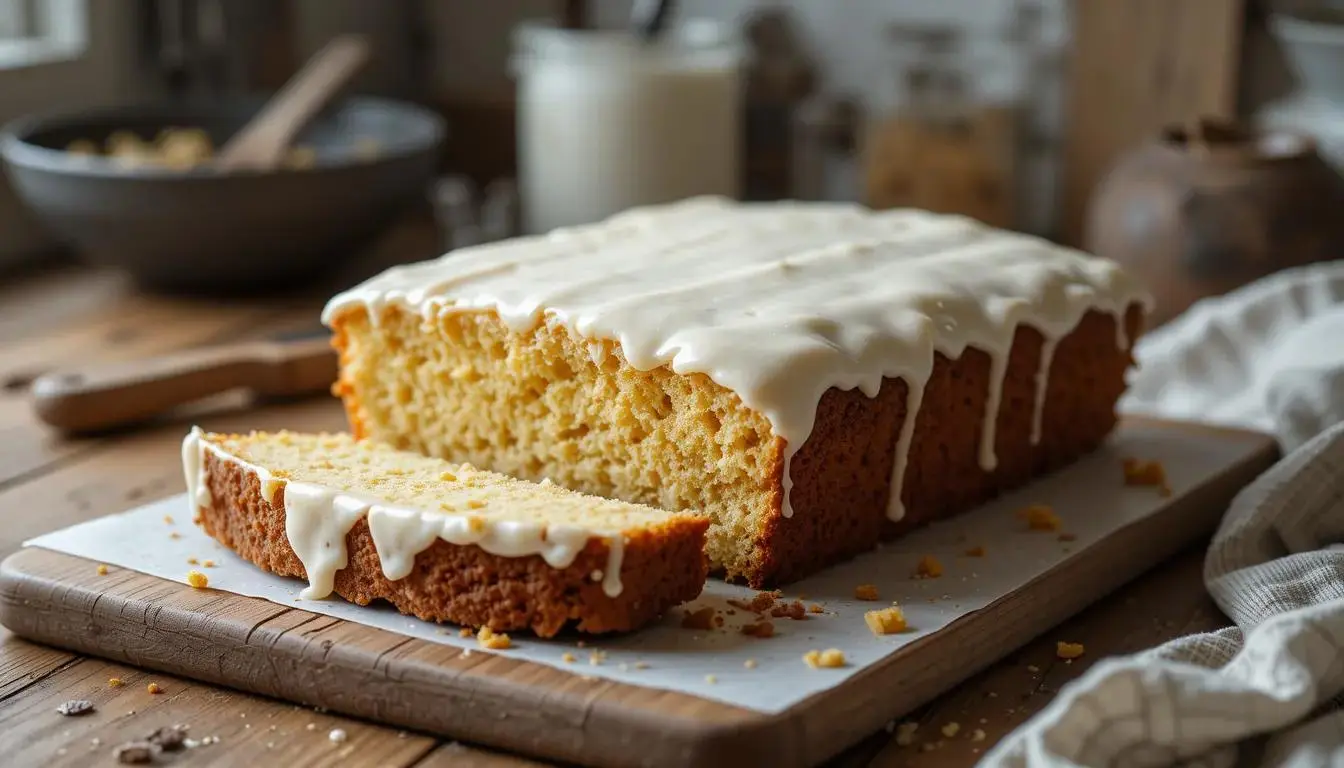Ever feel like your homemade sheet cakes lack that perfect balance of moistness and flavor? Whether they end up too dry, overly dense, or just plain bland, baking the perfect cake can feel like a daunting challenge. But don’t worry—this irresistibly moist kefir sheet cake is here to change that! With its tangy twist and melt-in-your-mouth texture, this recipe will become your go-to for any occasion. In this article, we’ll guide you through every step, share pro tips for achieving that flawless bake, and even offer creative variations to make this cake uniquely yours. Let’s dive into a baking experience you’ll truly love!
What is a Kefir Sheet Cake?
Kefir sheet cake is a delightful twist on the classic sheet cake, known for its moist, tender crumb and distinct tangy flavor. The secret lies in the kefir—a fermented dairy product rich in probiotics—that not only adds a subtle zing but also works wonders in keeping the cake irresistibly moist. This simple yet indulgent dessert is perfect for family gatherings, casual coffee breaks, or celebratory events, making it a versatile addition to your baking repertoire.
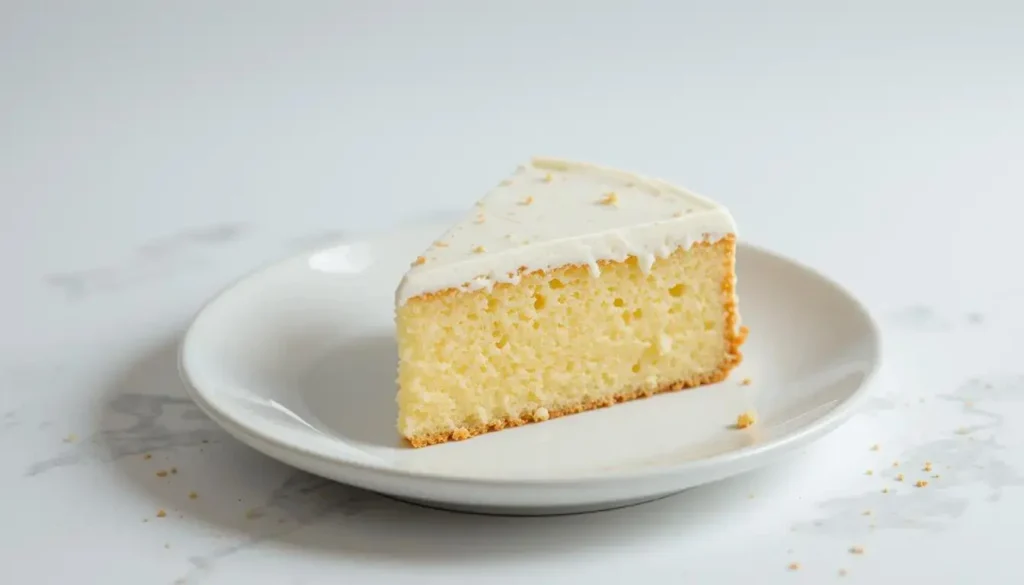
Unlike traditional cakes that may feel heavy or overly sweet, kefir sheet cake strikes the perfect balance of lightness and flavor. It’s easy to prepare, doesn’t require any fancy equipment, and can be customized with your favorite add-ins like nuts, fruits, or a luscious glaze. Whether you’re a seasoned baker or just starting, this recipe is as approachable as it is impressive.
Here’s what makes kefir sheet cake a standout choice:
- Moist Texture: Kefir’s natural acidity tenderizes the batter, creating a soft and fluffy cake.
- Unique Tangy Flavor: The slight tang complements the sweetness, offering a well-rounded taste.
- Simple Ingredients: No hard-to-find items—most ingredients are pantry staples.
- Quick and Easy: Perfect for when you want a homemade dessert without spending hours in the kitchen.
If you’ve ever struggled with cakes turning out dry or bland, this recipe is your solution. It’s time to elevate your baking game with a cake that’s sure to impress every time!
Why You’ll Love This Kefir Sheet Cake Recipe
If you’re looking for a cake that’s effortless to make yet delivers bakery-quality results, this kefir sheet cake is exactly what you need. It’s not just a recipe; it’s a foolproof way to create a dessert that’s as comforting as it is impressive. Here’s why this recipe will become a favorite in your kitchen:
1. No More Dry Cakes
- Kefir’s natural moisture-boosting properties ensure every bite is soft, tender, and melts in your mouth. You’ll never have to worry about serving a dry cake again!
2. Simple and Accessible
- This recipe uses everyday pantry staples like flour, sugar, eggs, and butter, paired with the magic of kefir. No complicated techniques or fancy ingredients are required.
3. Perfect for Any Occasion
- Whether it’s a family dinner, a birthday celebration, or a simple craving for something sweet, this cake fits the bill. Its versatility makes it suitable for both casual and formal settings.
4. Customizable to Your Taste
- Love chocolate? Add cocoa powder. Prefer a fruity twist? Mix in fresh berries. This recipe is your canvas to create a dessert that reflects your personal style.
5. Probiotic Goodness
- Thanks to kefir, this cake comes with a hidden health perk: probiotics! It’s a treat you can feel good about serving to your loved ones.
Quick Tips for the Best Results:
- Measure Accurately: Baking is a science, so be sure to measure your ingredients precisely for consistent results.
- Don’t Overmix: Once you combine the wet and dry ingredients, mix gently to avoid a dense cake.
- Use Fresh Kefir: For the best flavor and texture, make sure your kefir is fresh and not past its prime.
This kefir sheet cake recipe is more than just a dessert—it’s a solution to baking challenges, a canvas for creativity, and a guaranteed crowd-pleaser. Whether you’re a beginner or an expert, you’ll love how effortlessly it comes together. Let’s bake something amazing!
Ingredients for the Perfect Kefir Sheet Cake
This kefir sheet cake comes together with simple, everyday ingredients that you likely already have in your pantry. Here’s what you’ll need, plus some tips to make it your own:
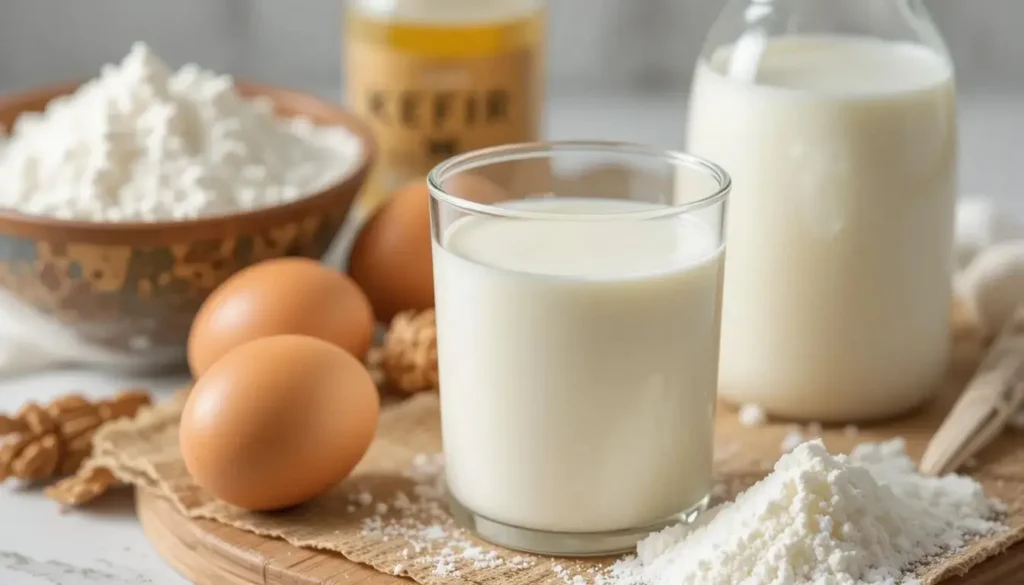
Basic Ingredients
- All-Purpose Flour: The foundation of your cake, providing structure and stability.
- Sugar: Adds sweetness and helps create a tender crumb.
- Baking Soda & Baking Powder: The dynamic duo that ensures your cake rises beautifully and stays light and airy.
- Kefir: The star ingredient! Its tangy flavor and natural acidity keep the cake moist and soft.
- Eggs: Bind everything together and contribute to the cake’s rich texture.
- Butter or Oil: Adds moisture and richness. Choose butter for flavor or oil for an ultra-moist cake.
- Vanilla Extract: Enhances the overall flavor with a warm, sweet aroma.
Optional Add-Ins
- Citrus Zest: For a bright, refreshing twist.
- Fresh Berries: Add bursts of fruity sweetness.
- Chopped Nuts: Bring in some crunch and a nutty undertone.
- Spices (Cinnamon or Nutmeg): Perfect for a cozy, spiced variation.
Pro Tip: Customize Your Cake!
- For a Mediterranean flair, mix in orange zest and drizzle with honey.
- Want something decadent? Stir in chocolate chips or top with a cream cheese glaze.
- Prefer a tropical vibe? Add shredded coconut and a hint of lime zest.
With these versatile ingredients and variations, your kefir sheet cake can suit any taste or occasion. Experiment and have fun making it uniquely yours!
How to Make a Moist and Tangy Kefir Sheet Cake
Ready to bake your perfect kefir sheet cake? Follow these simple steps for a foolproof, flavorful dessert that’s sure to impress.
Step 1: Preheat and Prepare
- Preheat your oven to 350°F (175°C).
- Grease and lightly flour a 9×13-inch sheet pan or line it with parchment paper for easy cleanup.
Step 2: Mix the Dry Ingredients
- In a large bowl, whisk together:
- 2 cups all-purpose flour
- 1 teaspoon baking soda
- 1 teaspoon baking powder
- ½ teaspoon salt
- This ensures even distribution and prevents lumps in your batter.
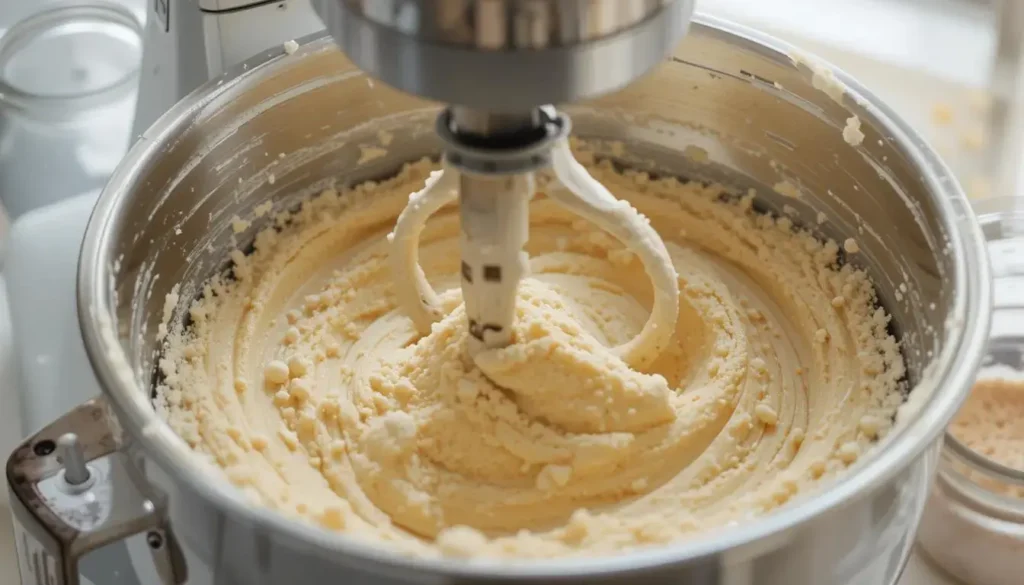
Step 3: Combine the Wet Ingredients
- In another bowl, beat together:
- 2 large eggs
- 1 cup sugar
- ½ cup melted butter (or neutral oil)
- 1 cup kefir
- 1 teaspoon vanilla extract
- Whisk until smooth and creamy. The kefir adds moisture and tang, while the butter or oil creates a rich texture.
Step 4: Bring It All Together
- Gradually add the dry ingredients to the wet ingredients, stirring gently until just combined. Avoid overmixing to keep your cake light and fluffy.
Step 5: Pour and Bake
- Pour the batter into your prepared sheet pan, spreading it evenly with a spatula.
- Bake for 30-35 minutes, or until a toothpick inserted in the center comes out clean.
Step 6: Cool and Decorate
- Allow the cake to cool completely in the pan before decorating.
- For a classic finish, dust with powdered sugar. Want to get fancy? Add a glaze, frosting, or fresh fruit topping.
Pro Tips for Success
- Use room-temperature ingredients to ensure a smooth batter.
- Check your cake early—every oven is different, so don’t let it overbake!
With these straightforward steps, baking a moist, tangy kefir sheet cake has never been easier. Now, it’s your turn to give it a try and enjoy every delicious bite!
Nutritional Benefits of Kefir Sheet Cake
Kefir sheet cake isn’t just about indulgent flavors; it also offers some surprising nutritional perks, thanks to its star ingredient—kefir. While it’s still a dessert, this cake brings a touch of wholesome goodness to your table, making it a treat you can feel a little better about enjoying.
The Power of Kefir
- Probiotic Boost: Kefir is packed with probiotics, which are beneficial bacteria that support gut health. A healthier gut means better digestion and overall well-being.
- Rich in Nutrients: Loaded with calcium, vitamin D, and protein, kefir contributes to stronger bones and muscle repair.
- Low in Lactose: Even for those with lactose sensitivity, kefir is often easier to digest, making this cake more accessible.
Balanced Indulgence
- The natural tanginess of kefir means you can use less sugar without compromising flavor.
- Using quality fats like butter or oil provides energy and enhances texture without overloading on unhealthy ingredients.
Add-In Nutritional Bonuses
- Fresh Fruits: Adding berries or citrus zest can boost the vitamin C content.
- Nuts and Seeds: Incorporating walnuts or chia seeds adds healthy fats and fiber.
- Whole Wheat Flour Option: For a slightly healthier twist, substitute a portion of the all-purpose flour with whole wheat flour for added fiber.
This kefir sheet cake strikes a wonderful balance between indulgence and nutritional benefits. While it’s still a dessert, it’s one that feels a little more nourishing with every bite. So, enjoy this tangy, moist cake knowing it’s a small win for both your taste buds and your health!
Pro Tips and Variations for Your Kefir Sheet Cake
To make your kefir sheet cake even more special, here are some expert tips and creative variations. Whether you’re aiming for perfection or adding a personal touch, these ideas will take your cake to the next level.
Pro Tips for the Best Results
- Use Fresh Kefir: Fresh kefir ensures optimal tanginess and the right consistency for a moist cake. Avoid using expired or overly sour kefir.
- Don’t Overmix the Batter: Gently fold the ingredients together. Overmixing can make the cake dense instead of light and fluffy.
- Room Temperature Ingredients: Bring all your ingredients to room temperature before starting. This helps the batter mix evenly for a smooth texture.
- Test for Doneness: Use a toothpick or skewer to check the center of the cake. If it comes out clean or with just a few crumbs, your cake is ready!
- Cool Completely Before Frosting: If you plan to add frosting or glaze, let the cake cool entirely to avoid melting the topping.
Flavor Variations to Try
- Citrus Burst: Add 1 tablespoon of lemon or orange zest to the batter for a refreshing twist. Pair it with a citrus glaze for a vibrant finish.
- Chocolate Lovers: Mix ¼ cup of cocoa powder into the dry ingredients and sprinkle chocolate chips on top for a decadent version.
- Nutty Delight: Fold in chopped walnuts, pecans, or almonds for added crunch and richness.
- Spiced Comfort: Add 1 teaspoon of cinnamon and a pinch of nutmeg to the dry ingredients for a warm, spiced flavor—perfect for fall gatherings.
- Tropical Vibes: Stir in shredded coconut and a hint of pineapple extract to bring a tropical flair to your cake.
Creative Toppings
- Dust with powdered sugar for a simple, elegant look.
- Drizzle a tangy lemon glaze for added brightness.
- Spread a layer of cream cheese frosting for a rich, decadent finish.
- Top with fresh fruits or berries for a colorful and healthy garnish.
Make It Your Own
The beauty of kefir sheet cake lies in its versatility. Whether you stick to the classic recipe or experiment with these variations, you’re sure to create a dessert that reflects your personal taste and style. Happy baking!
Serving Suggestions for Your Kefir Sheet Cake
Your kefir sheet cake is baked to perfection—now it’s time to serve it in a way that enhances its tangy, moist, and tender flavor. Here are some serving ideas to make this dessert even more memorable.
Serve It Warm or Chilled
- Warm Comfort: Serve the cake slightly warm for a cozy dessert experience, perfect with a cup of tea or coffee.
- Chilled Treat: Refrigerate for an hour before serving if you prefer a cool, refreshing slice that’s ideal for summer days.
Pair It Perfectly
- With Beverages: This cake pairs wonderfully with black tea, herbal infusions, or a creamy latte. For kids, serve it alongside a cold glass of milk.
- With Ice Cream: A scoop of vanilla or lemon sorbet on the side takes this dessert to a whole new level of indulgence.
Dress It Up for Special Occasions
- Frosting Options: Add a layer of cream cheese frosting or a light citrus glaze for a decorative and flavorful touch.
- Toppings: Garnish with fresh berries, edible flowers, or a sprinkle of powdered sugar to elevate its presentation.
- Layered Dessert: Slice the cake into smaller pieces and layer it with whipped cream and fruit for a creative trifle.
Casual or Fancy—You Choose!
- Keep it simple for a midweek family dessert.
- Add elegant toppings for holidays, birthdays, or special celebrations.
Portioning Tips
- For a casual gathering, cut into square or rectangular pieces.
- Hosting a formal event? Serve smaller slices on decorative plates with a drizzle of glaze for added flair.
Whether you’re enjoying this cake at home with loved ones or showcasing it at a special event, these serving suggestions ensure every bite is as delightful as the last. Let your creativity shine and enjoy the sweet rewards of your baking masterpiece!
Storing and Reheating Leftovers of Kefir Sheet Cake
Your kefir sheet cake is a delightful treat, and with proper storage and reheating tips, you can enjoy it fresh for days. Here’s how to keep your cake moist and delicious even after baking.
How to Store Your Kefir Sheet Cake
- At Room Temperature:
If you plan to consume the cake within 1-2 days, store it in an airtight container or cover it tightly with plastic wrap. This keeps it soft and prevents it from drying out. - In the Refrigerator:
For longer storage (up to 5 days), refrigerate the cake in an airtight container. Allow the cake to come to room temperature before serving for the best flavor and texture. - In the Freezer:
To enjoy your cake later, wrap individual slices in plastic wrap and store them in a freezer-safe bag or container. This method keeps the cake fresh for up to 3 months.
Reheating Your Cake for Maximum Freshness
- Microwave Method:
Place a slice of cake on a microwave-safe plate and heat it for 10-15 seconds. This restores the cake’s softness without drying it out. - Oven Method:
Preheat your oven to 300°F (150°C). Wrap the cake slice in foil to prevent it from drying out, and warm it for 5-7 minutes. - Let It Thaw (For Frozen Cake):
Remove the cake from the freezer and let it thaw at room temperature for 1-2 hours before serving.
Tips for Keeping It Moist
- Add a small slice of bread to your storage container if you’re keeping the cake at room temperature. The bread helps retain moisture.
- Avoid overheating the cake, as it can become dry. Heat only until warm to the touch.
Enjoy Anytime
Whether you’re savoring leftover slices for breakfast, dessert, or an afternoon snack, these storage and reheating tips ensure your kefir sheet cake remains as delicious as the day you baked it. So, go ahead and make an extra batch—future you will thank you!
Common Mistakes When Baking Kefir Sheet Cake (and How to Fix Them)
Baking the perfect kefir sheet cake is easier than you think, but even the best bakers can encounter a few hiccups. Here are the most common mistakes and simple solutions to ensure your cake comes out flawless every time.
1. Overmixing the Batter
- The Problem: Overmixing can lead to a dense and tough cake instead of the light, fluffy texture you want.
- The Fix: Mix just until the wet and dry ingredients are combined. It’s okay if there are a few small lumps—they’ll work themselves out as the cake bakes.
2. Using Expired or Overly Sour Kefir
- The Problem: Old kefir can alter the flavor and texture, making the cake too sour or uneven.
- The Fix: Always use fresh kefir for the best tangy flavor and reliable results. Check the expiration date before starting.
3. Not Preheating the Oven
- The Problem: Baking in an oven that hasn’t reached the correct temperature can cause uneven cooking and affect the rise of the cake.
- The Fix: Preheat your oven to the recommended 350°F (175°C) before putting the cake in. Use an oven thermometer if you’re unsure about the accuracy.
4. Uneven Baking
- The Problem: Some areas of the cake might be overcooked while others remain undone.
- The Fix: Spread the batter evenly in the pan and rotate the pan halfway through baking for even heat distribution.
5. Skipping the Cooling Step
- The Problem: Cutting the cake too soon can make it crumble or stick to the knife.
- The Fix: Allow the cake to cool completely in the pan before slicing. Use a serrated knife for clean cuts.
6. Overbaking the Cake
- The Problem: An overbaked cake can turn dry and lose its signature moist texture.
- The Fix: Start checking for doneness 5 minutes before the recommended bake time. A toothpick inserted in the center should come out clean or with just a few moist crumbs.
7. Neglecting Proper Measurements
- The Problem: Guessing measurements or not leveling off ingredients can throw off the balance of the recipe.
- The Fix: Use measuring cups and spoons for precision. For dry ingredients like flour, spoon it into the cup and level it off with a flat edge.
Bake with Confidence
With these common pitfalls addressed, you’ll breeze through making your kefir sheet cake like a pro. Remember, even if something goes wrong, it’s all part of the baking journey—and the results will still be delicious!
FAQs About Baking with Kefir
What does kefir do in baking?
Kefir acts as a natural tenderizer in baking, thanks to its acidity and probiotics. It helps create a moist, tender texture in cakes and breads, while also adding a subtle tangy flavor. Additionally, kefir can improve the rise of baked goods by reacting with leavening agents like baking soda.
Can I use kefir instead of buttermilk in the Cake?
Yes, kefir is an excellent substitute for buttermilk in cake recipes. Its similar acidity and consistency make it a perfect one-to-one replacement. Kefir not only replicates the tangy flavor of buttermilk but also enhances the moisture and tenderness of the cake.
How long does kefir last after opening?
Once opened, kefir typically stays fresh for 5–7 days when stored in the refrigerator. For the best flavor and texture, check the “use by” date on the package and always seal it tightly after use. If you notice a sourer taste or an off smell, it’s time to discard it.
Can I use kefir instead of sour cream in baking?
Absolutely! Kefir can be used as a substitute for sour cream in baking. It has a similar tangy flavor and creamy texture, making it ideal for recipes like cakes, muffins, and quick breads. Use it as a 1:1 replacement, but note that kefir is slightly thinner than sour cream.
How to tell if kefir is bad?
You can tell kefir has gone bad if:
It has an overly sour or unpleasant smell.
The texture becomes excessively separated or clumpy.
It tastes off or uncharacteristically sharp.
There’s visible mold or discoloration on the surface.
When in doubt, discard it to avoid any risk.
Is kefir healthier than yogurt?
Kefir and yogurt both offer health benefits, but kefir has the edge when it comes to probiotics. Kefir contains a wider variety of beneficial bacteria and yeast, which may support better gut health. Additionally, kefir is often lower in lactose, making it easier to digest for those with lactose sensitivity.
Why This Kefir Sheet Cake Recipe is a Must-Try
Baking doesn’t have to be complicated, and this kefir sheet cake is the perfect example of how simple ingredients can create extraordinary results. With its moist, tender crumb and delightful tangy flavor, this cake is more than just a dessert—it’s a celebration of wholesome baking.
Whether you’re a seasoned baker or just starting out, this recipe is approachable, versatile, and guaranteed to impress. The magic of kefir not only elevates the texture and taste but also adds a unique twist that sets this cake apart.
Why You’ll Love Making This Cake
- It’s easy to prepare with everyday ingredients.
- Perfect for any occasion, from casual family dinners to festive gatherings.
- Fully customizable with flavors and toppings to suit your taste.
So why wait? Gather your ingredients, preheat that oven, and let this recipe transform your baking routine. Once you’ve tried it, don’t forget to share your creations, tips, or variations in the comments. We’d love to hear how you made this kefir sheet cake your own!
Happy baking! 🎂
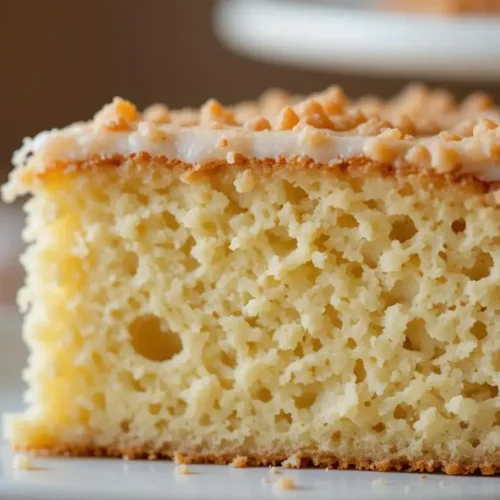
kefir sheet cake
Ingredients
- 2 cups all-purpose flour
- 1 teaspoon baking soda
- 1 teaspoon baking powder
- ½ teaspoon salt
- 1 cup sugar
- 2 large eggs
- ½ cup melted butter or neutral oil
- 1 cup kefir
- 1 teaspoon vanilla extract
Instructions
- Preheat oven to 350°F (175°C). Grease a 9×13-inch sheet pan or line it with parchment paper.
- In a bowl, whisk together flour, baking soda, baking powder, and salt.
- In another bowl, beat sugar, eggs, butter, kefir, and vanilla until smooth.
- Gradually add dry ingredients to wet, mixing gently until combined.
- Pour batter into the prepared pan and bake for 30-35 minutes, or until a toothpick comes out clean.
- Cool completely before decorating or serving.
Notes
- Fresh kefir yields the best flavor and texture.
- Customize with add-ins like nuts, chocolate chips, or citrus zest.
- Store leftovers in an airtight container for up to 5 days.

